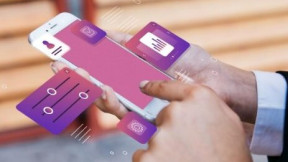
NPP (the New Payments Platform) has greatly assisted in making significant progress in the digital payments infrastructure of Australia since 2018. The best proof of this is the current status of the country as the 13th biggest e-commerce market in the globe.
In addition, it is estimated that Australia will surpass the world average by 10%, with a CAGR of about 13% between 2021 and 2025. One of the vital powers behind the New Payments Platform’s success is the well-recognized payment solution, PayID.
It is a safe and easy-to-use payment option that is massively used in all possible fields and sectors of the country, including gambling. That’s the reason why today you can come across so many PayID casinos in Australia featuring this up-to-date banking method.
But how does PayID work within a global payment gateway? Let’s find the answer together.
The General Overview of PayID – What Is It and How Does It Work?
As you can probably guess from the name itself, PayID is a linked ID-based banking option that enables users to perform various transactions without the need for nerve-wracking and lengthy verification procedures. It is part of an NPP initiative backed by the government that aims to simplify online payments and foster a more digitalized economy.
With PayID, customers must sign into their respective mobile banking app or online platform and use the receiver ID to deposit money. Generally, the user’s ID is either the mobile number or email address, making it easy to remember.
PayID in The International Payment Infrastructure

Even though PayID has quite popularity within Australia, it is still a new and not widely known name in the international market. At the moment, PayID, along with the NPP, has only expanded to New Zealand, thereby limiting its global operability to the Oceania region.
It means that any desire or plan to make international transactions outside of this region requires an intermediary banking provider that will serve as an international payment gateway.
Simply put, online transactions conducted internationally with PayID should first be executed through a certain third-party payment system that provides PayID as a banking option. Then, all other steps at this stage of the transaction process as usual.
Once the transaction is completed, the funds will be credited to the offshore accounts of the payment provider before being
Then, upon completion of the transaction, the funds are transferred into the payment provider’s offshore accounts before going to the foreign seller’s account.
Pros and Cons of Using PayID for Online Payment Gateways
Nothing is perfect in this world, and you probably can’t find any payment provider that lacks a single drawback. PayID is not an exception as well – it has both benefits and disadvantages that shape the whole “appearance” of this payment method. Let’s have a look.
Pros
- Swift and Easy-to-Process Transactions: Payments with PayID only require a mobile banking service and a simple ID number to complete the transaction. Typically, all payments made through PayID are instant and take place in real-time, thanks to the NPP’s provided infrastructure.
- No Account Needed: Customers are not required to create a special account to use PayID. They don’t even need a dedicated application for it. All a user needs is a one-of-a-kind ID that can be either a mobile number or email address.
- Minimized Risk of Mistakes: When you deposit through PayID, you can see the name of the person to whom you want to transfer funds on your screen. It helps to identify the right receiver and eliminates the risk of mistakes.
Cons
- Geo-Restrictions: Not all countries and regions have the opportunity to use PayID, as it is still relatively new for the international market.
Fees and Commissions When Using PayID

At the moment, there are no fixed fees when it comes to using PayID itself. It’s because fees and commissions are mainly managed by the participating banks and financial institutions on their own terms.
Regardless of this vagueness, however, the typical fees that come to light from making international payments through third-party providers still apply. It can include FX costs and setup fees.
So, it’s always a great idea to check all the details concerning potential fees with the payment provider.




